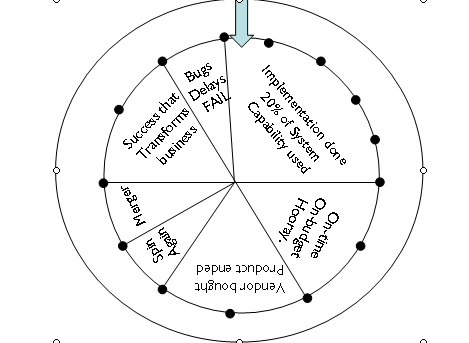HRevolution Sponsor Spotlight - Nobscot Corporation
There is significant energy and momentum in the Human Resources Technology marketplace towards integration. Traditional core HRIS and ERP vendors are trying to strengthen their offerings in areas like Talent Management and Business Intelligence. Established talent management vendors are expanding their application footprints to encompass more and more functionality be it applicant tracking or learning management.
In many ways the trend towards integration can benefit customers, as it typically eliminates (or at least dramatically reduces) the need for complex, and often custom built integrations to pass HR information around the various systems.
But even as the big ERP providers get bigger, and the Talent Management vendors expand, there remain areas of the HR and talent landscape that neither will likely ever consume. Important technology supported functions like background checks, candidate assessments, or complex workforce scheduling.
These 'edge' products and the processes that they support are often vitally important to the success of an organization and can go a long way towards making the day-to-day lives of HR professionals much easier.
HRevolution sponsor Nobscot Corporation thrives on the edge. Their flagship product WebExit, that supports the process of Exit Interviews was created to address a gap and fulfill a need that the traditional HR Technology companies could not support. Efficient capture, and subsequent analysis of exit interview data is to many organizations a key source of strategic information that can directly impact ongoing operations, planning, and overall profitability of the enterprise. If you really believe as an organization that human capital is the source of your competitive advantage, then understanding the flow of this capital from beginning (recruiting) to end (exit interview) is vital to your long term survival.
In addition to its market leading product for exit interviews, Nobscot also offers Mentor Scout, the only real enterprise solution for managing internal mentoring programs. Mentor Scout helps to manage all aspects of a corporate mentoring initiative, from matching mentors with mentees, to providing a secure environment for communication, to tracking the progress and success of the program. For many employees in the organization making connections with experienced and respected colleagues is a necessary and even critical activity. Mentoring programs have been shown to be a powerful driver of increased engagement and forge important bonds in the make up of the company.
Being on the "edge," allows companies like Nobscot to respond quickly to HR's needs. For example, based on feedback from clients Nobscot expanded its WebExit platform to handle new hire surveys and quality of hire metrics. The resulting program, called FirstDays helps organizations accurately measure the success of recruiting, onboarding, orientation and new hire socialization initiatives. On the Mentor Scout side of the house, Nobscot expanded Mentor Scout with their Talent Networking Edition which adds peer-to-peer corporate social networking components to solve some common HR challenges such as knowledge sharing, breakdown of silos, recognition, and managing remote employees.
I encourage you to check out Nobscot Corporation, they are a company committed to the long-term success of their customers, and passionate about improving organizational effectiveness and advancing the discipline of Human Resources.
Thanks very much to Nobscot, especially CEO Beth N. Carvin for their generous support of the HRevolution.
----------------------------------------------------------------------------------------------------------------------
Note : This post is part of the HRevolution Sponsor Spotlight series, the event organiizer's way of saying thanks to the fantastic sponsors of HRevolution, without their generous support the event would not be possible.

 Steve
Steve
